|
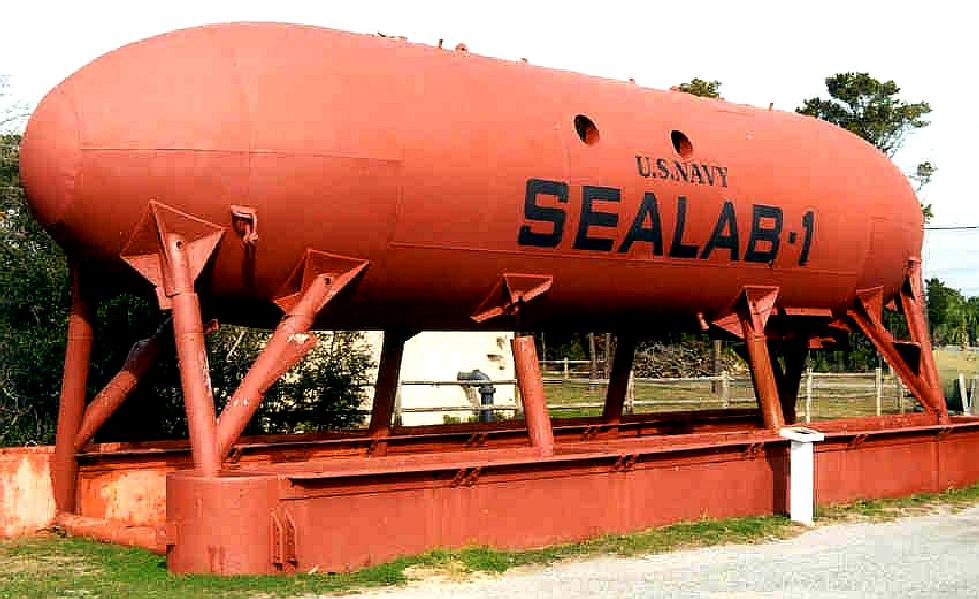
SEALAB
I
It
reminds us of Captain
Nemo from Jules
Verne, but this is real life - and it looks good. No wonder they made
a TV
cartoon series based on the concept.
ABOUT
SEALAB
SEALAB I, II, and III were experimental underwater habitats developed by the United States Navy in the 1960s to prove the viability of saturation diving and humans living in isolation for extended periods of time. The knowledge gained from the SEALAB expeditions helped advance the science of deep sea diving and rescue, and contributed to the understanding of the psychological and physiological strains
humans can endure.
SEALAB
I
SEALAB I was lowered off the coast of Bermuda in 1964 to a depth of 58 m (192 feet of seawater (fsw)) below the sea's surface. It was constructed from two converted floats and held in place with axles from railroad cars. The experiment involved four divers (LCDR Robert Thompson, MC; Gunners Mate First Class Lester Anderson, Chief Quartermaster Robert A. Barth, and Chief Hospital Corpsman Sanders Manning), who were to stay submerged for three weeks. The experiment was halted after 11 days due to an approaching
tropical
storm.
Before the SEALAB habitat could be emplaced, a number of rifle grenades had to be found and removed from the bottom around Argus Island. The grenades had been fired up into the air with the object of targeting their explosions when they returned to the water. With enough impacts the position of Argus Island could be determined to within a few feet. Unfortunately, many grenades did not detonate upon impact with the sea surface, and divers had to locate and remove them. This was a job for divers from the Navy SOFAR Station (Columbia University Geophysical Field Station), and both
U.S. Navy and Air Force civilians and enlisted SCUBA divers. A platform which had been built to lower the Remote Underwater Manipulator (RUM) from a garage on Argus Island to the sea floor was also removed. SEALAB I was then placed on the nearly flat bottom on a layer of algal balls and some
corals.
SEALAB I was commanded by Captain George F. Bond, also called "Papa Topside", who was key in developing theories about saturation
diving. SEALAB I proved that saturation diving in the open ocean was viable for extended periods. The experiment also offered information about habitat placement, habitat umbilicals, humidity, and helium speech descrambling.
SEALAB I is on display at the Museum of Man in the Sea, in Panama City Beach, Florida, near where it was initially tested offshore before being deployed. It is on outdoor display. Its
metal hull is largely intact, though the paint is faded to a brick red.
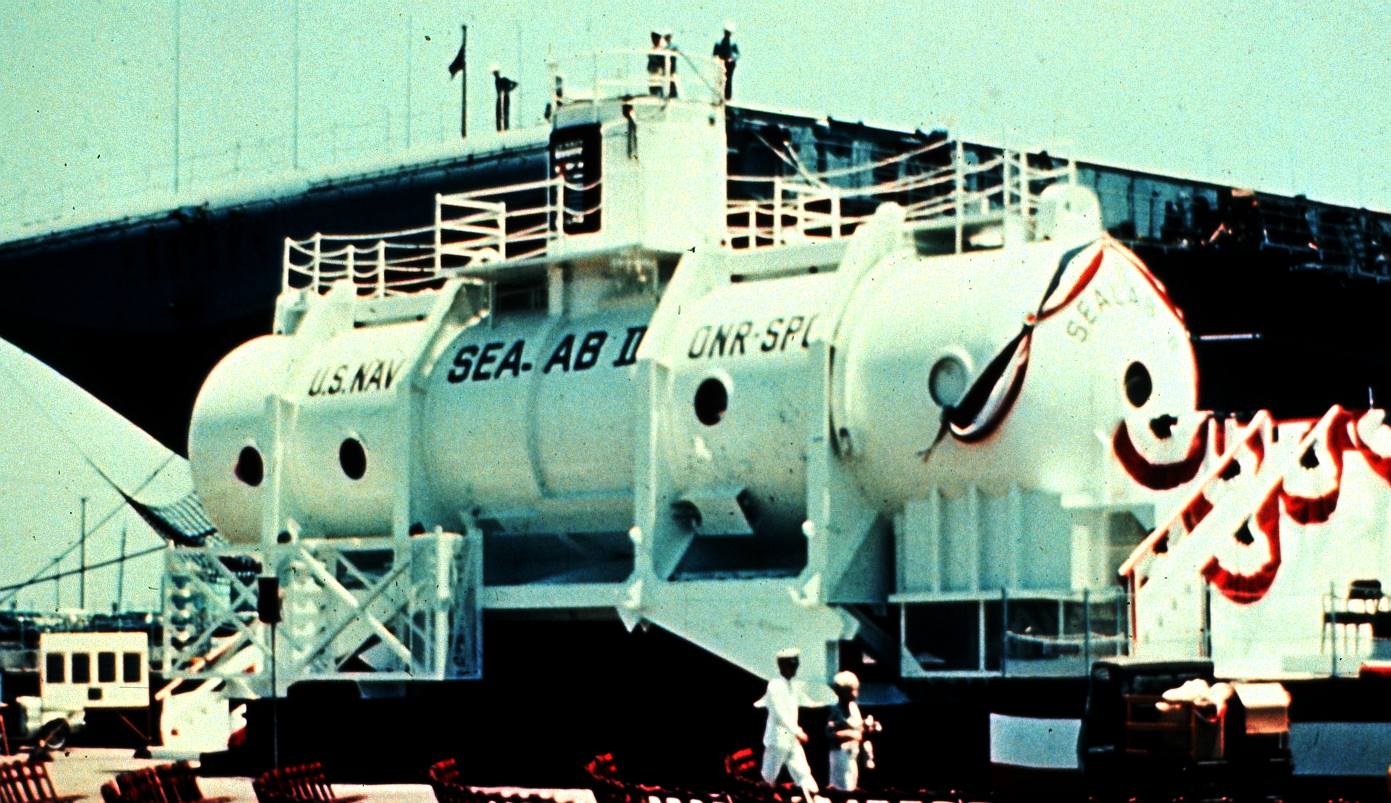
SEALAB II
SEALAB II was launched in 1965, and unlike SEALAB I, it included hot showers and refrigeration. It was placed in the La Jolla Canyon off the coast of Scripps Institution of Oceanography/UCSD, in La Jolla, California, at a depth of 62 m (205-ft). On August 28, 1965, the first of three teams of divers moved into what became known as the "Tilton Hilton" (Tiltin' Hilton, because of the slope of the landing site).
Each team spent 15 days in the habitat, but aquanaut/astronaut Scott Carpenter remained below for a record 30 days. In addition to physiological testing (described in the book by Radloff & Helmreich), the divers tested new tools, methods of salvage, and an
electrically heated drysuit. They were aided by a bottlenose
dolphin named Tuffy from the U.S. Navy Marine Mammal Program. Aquanauts and Navy trainers attempted, with mixed results, to teach Tuffy to ferry supplies from the surface to SEALAB or from one diver to another, and to come to the rescue of an aquanaut in distress. There were plans for Tuffy also to take part in SEALAB III.
A sidenote from SEALAB II was a congratulatory telephone call that was arranged for Carpenter and President Lyndon B. Johnson. Carpenter was calling from a decompression chamber with helium gas replacing nitrogen, so Carpenter sounded unintelligible to operators. The tape of the call circulated for years among Navy divers before it was aired on NPR in 1999.
In 2002, a group of researchers from the Scripps Institution of Oceanography's High Performance Wireless Research and Education Network boarded the MV Kellie Chouest and used a Scorpio ROV to find the site of the SEALAB habitat. This expedition was the first return to the site since the habitat was moved.
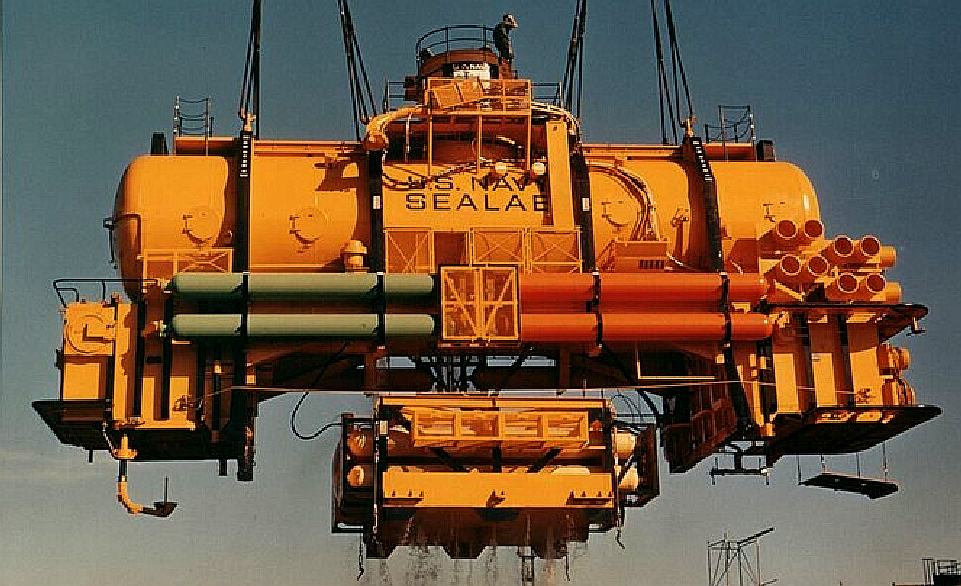
SEALAB III
Four years later, SEALAB III used a refurbished SEALAB II habitat, but was placed in water three times as deep. Five teams of nine divers were scheduled to spend 12 days each in the habitat, testing new salvage techniques and conducting oceanographic and fishery studies. Preparations for such a deep dive were extensive. In addition to many biomedical studies, work-up dives were conducted at the U.S. Navy Experimental Diving Unit at the
Washington D.C. Navy Yard. These “dives” were not done in the open sea, but in a special hyperbaric chamber that could recreate the pressures at depths as great as 1,025 fsw (312 m).
According to John Pińa Craven, the U.S. Navy's head of the Deep Submergence Systems Project of which SEALAB was a part, SEALAB III "was plagued with strange failures at the very start of operations". On February 15, 1969, SEALAB III was lowered to 610 fsw (185 m), off San Clemente Island,
California. The habitat soon began to leak and four divers were sent to repair it, but they were unsuccessful. During the second attempt, aquanaut Berry L. Cannon died. It was found that his rebreather was missing baralyme, the chemical necessary to remove carbon dioxide. Surgeon commander John Rawlins, a Royal Navy medical officer assigned to the project, also suggested that hypothermia during the dive was a contributing factor to the problem not being recognized by the diver.
According to Craven, while the other divers were undergoing the week-long decompression, repeated attempts were made to sabotage their air supply by someone aboard the command barge. Eventually, a guard was posted on the decompression chamber and the men were recovered safely. A potentially unstable suspect was identified by the staff psychiatrist but the culprit was never prosecuted. Craven suggests this may have been done to spare the Navy bad press so soon after the USS Pueblo incident.
The SEALAB program came to a halt, and although the SEALAB III habitat was retrieved, it was eventually scrapped. Aspects of the research continued in classified military programs[citation needed], but no new habitats were built.
NCEL of Port Hueneme, CA (now a part of NFESC), was responsible for the handling of several contracts involving life support systems used on SEALAB III.
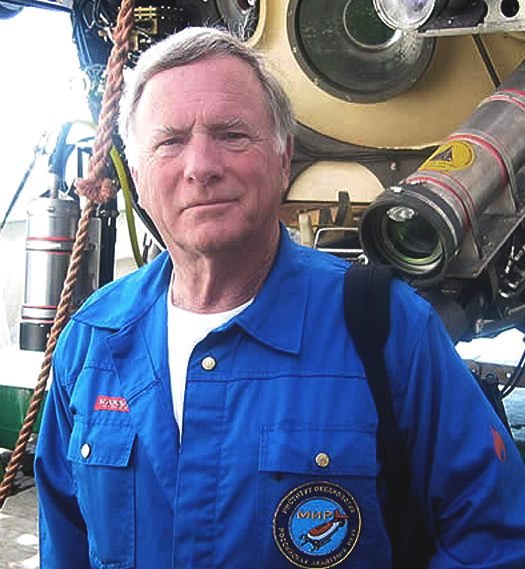
DON
WALSH - Don
Walsh has been associated with ocean science, engineering, and marine policy for more than 50 years. He was commissioned as an officer in the
United States Navy upon graduation from the United States Naval Academy in 1954. He attained the rank of Captain by the time he retired. He spent 15 years at sea, mostly in
submarines, and was a submarine commander. He worked with ocean-related research and development for the Navy. Serving as Dean of Marine Programs and Professor of Ocean Engineering at the University of Southern California, Walsh initiated and directed the university's Institute for Marine and Coastal Studies. In 1989 his company, International Maritime Incorporated, contracted a joint venture with the P.P. Shirshov Institute of Oceanology to establish an underwater maintenance company, Soyuz Marine Service, which continues to operate in the Russian Federation.
Walsh received a Bachelor's degree in Engineering from the U.S. Naval Academy, a Master's degree in Political Science from San Diego State University, and a Master's degree and a Ph.D. in Physical Oceanography from Texas A&M University. He was appointed by Presidents Carter and Reagan to the U.S. National Advisory Committee on Oceans and Atmosphere, was a member of the Law of the Sea Advisory Committee for the U.S. Department of State, and served as a member of the Marine Board of the U.S. National Research Council from 1990 to 1993.
Walsh was named one of the world's great explorers by Life magazine. In the MIR submersible, he dived on the
RMS Titanic, the German battleship
Bismarck, and the Mid-Atlantic Ridge. He has spent more than five decades traveling the world conducting research in, on, and around the oceans.
On April 14, 2010, The National Geographic Society bestowed its greatest honor, the Hubbard Medal, on Walsh in a ceremony in Washington, D.C. at the
National Geographic headquarters. The U.S. Navy awarded Walsh its Distinguished Public Service Award.
Don
lives with his wife Joan in the Dora–Sitkum area of Oregon, near Coquille. He has managed a marine consulting business since 1976, and conducts about 5 deep-sea expeditions per year.
SEALAB 2021 TV SERIES
Sealab 2021 is an American television series. It was shown on Cartoon Network's late-night programming block, Adult Swim. Cartoon Network aired the show's first three episodes in December 2000 before the official inception of the Adult Swim channel on September 2, 2001, with the final episode airing on April 25, 2005. Sealab 2021 is one of the four original Williams Street series that premiered in 2000 before Adult Swim officially launched, the others being Aqua Teen Hunger Force, The Brak Show and Harvey Birdman, Attorney at Law.
Much like Adult Swim's Space Ghost Coast to Coast, the animation used stock footage from a 1970s Hanna-Barbera cartoon, in this case the short-lived, environmentally-themed Sealab 2020, along with original animation. The show was a satirical parody of the original Sealab series, and the conventions of 1970s animated children's series generally. While there was initial resistance from several of the original series' creators to the reuse of their characters, production moved forward on the series. Sealab 2021 was produced by 70/30 Productions, which eventually closed in January 2009.
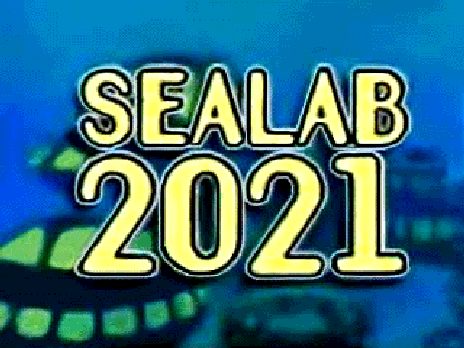
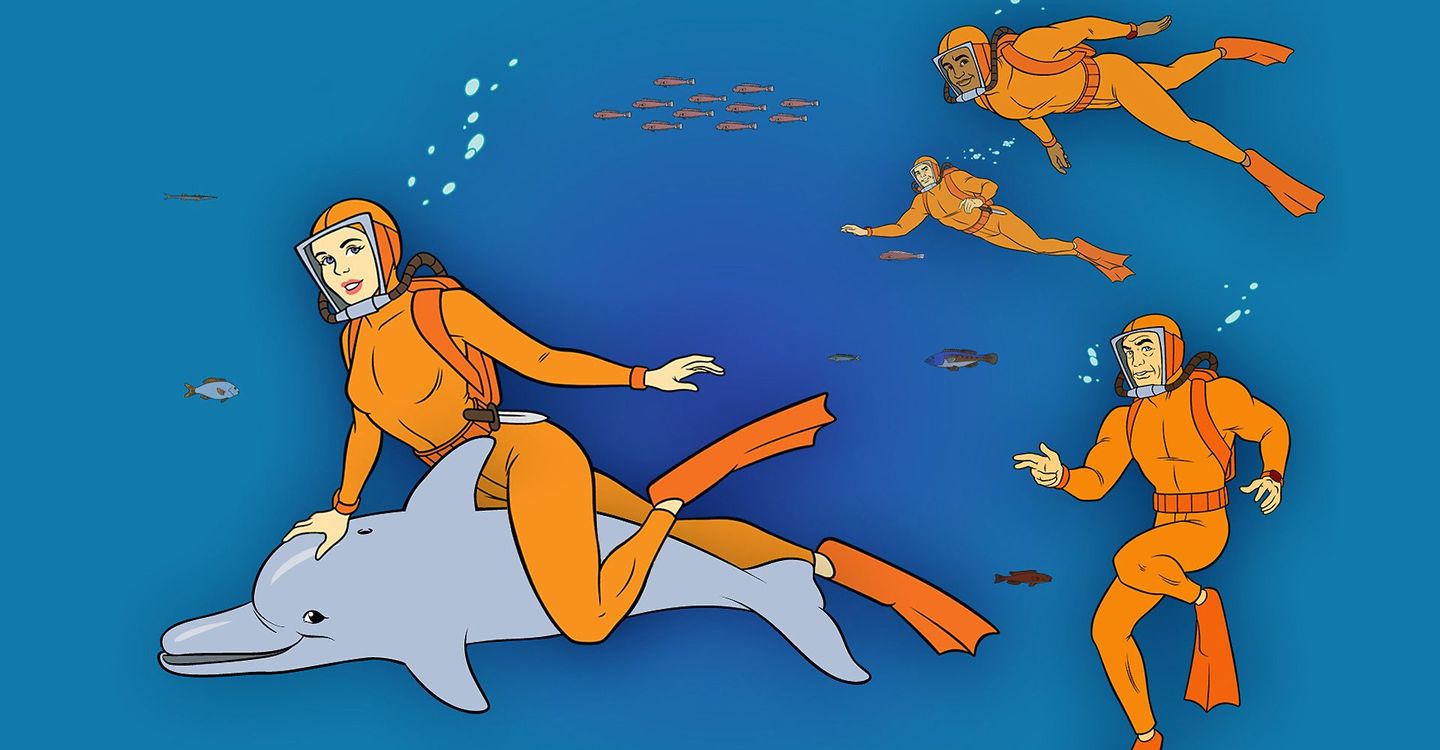
SHOW
CREATION
Adam Reed and Matt Thompson, the creators and writers of Sealab 2021, came up with the idea for the show in 1995 while they were production assistants for Cartoon Network. They stumbled on a tape of the show Sealab 2020, and wrote new dialogue. Cartoon Network passed on the show because they did not believe it was funny. Five years after quitting Cartoon Network, the two went back to the original tape, this time making the characters do what they wanted. Cartoon Network bought the show, coincidentally around the same time that Adult Swim was created. The original "pitch pilot" is available on the Season 1 DVD as a special feature.
Very few of the episodes of the series share any continuity or ongoing plot. For instance, the entire installation is destroyed at the end of many episodes, and crew members are often killed in horrible ways, only to return in the following episode. There are occasional running gags, such as the "Grizzlebee's" restaurant chain, the character of Sharko, and Prescott, the half-man, half-tentacle monster "from the network." While the show claims to be set in 2021, it contains many references to the pop culture of the 1980s–2000s, and makes use of other cartoons from the 1970s besides that on which it is based, such as 1973's Butch Cassidy for the on-screen appearances of the Sealab writers, and various one-off appearances of other characters.
Paul Di Filippo of the website Sci Fi Weekly, in his review of the Season 3 DVD, felt that general fan opinion of the show declined sharply following the death of Harry Goz (the voice of Captain Hazel Murphy) during Season 3. After four seasons, the final episode aired on April 25, 2005.
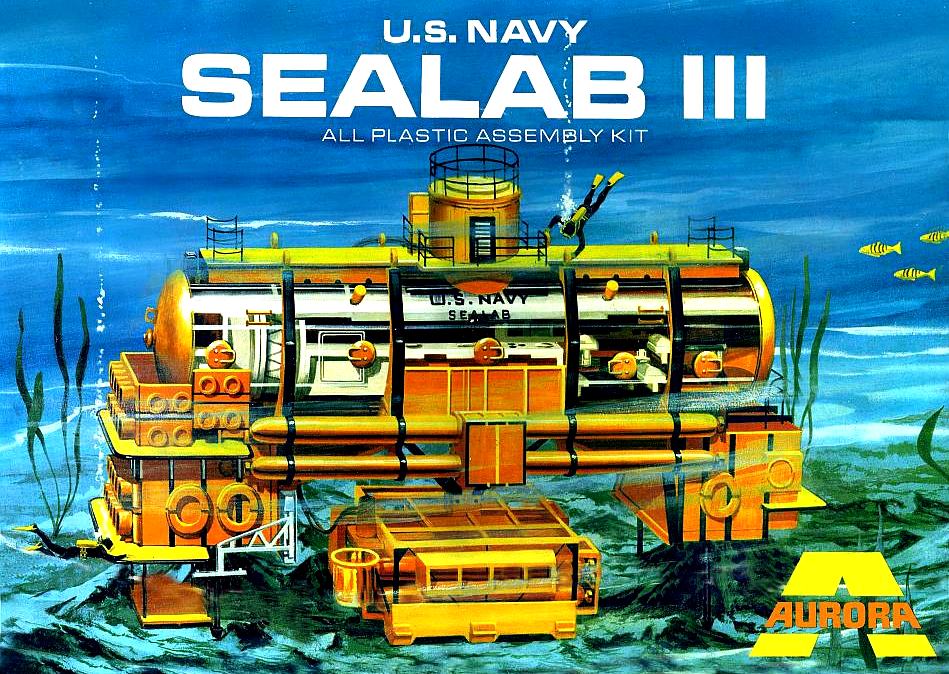
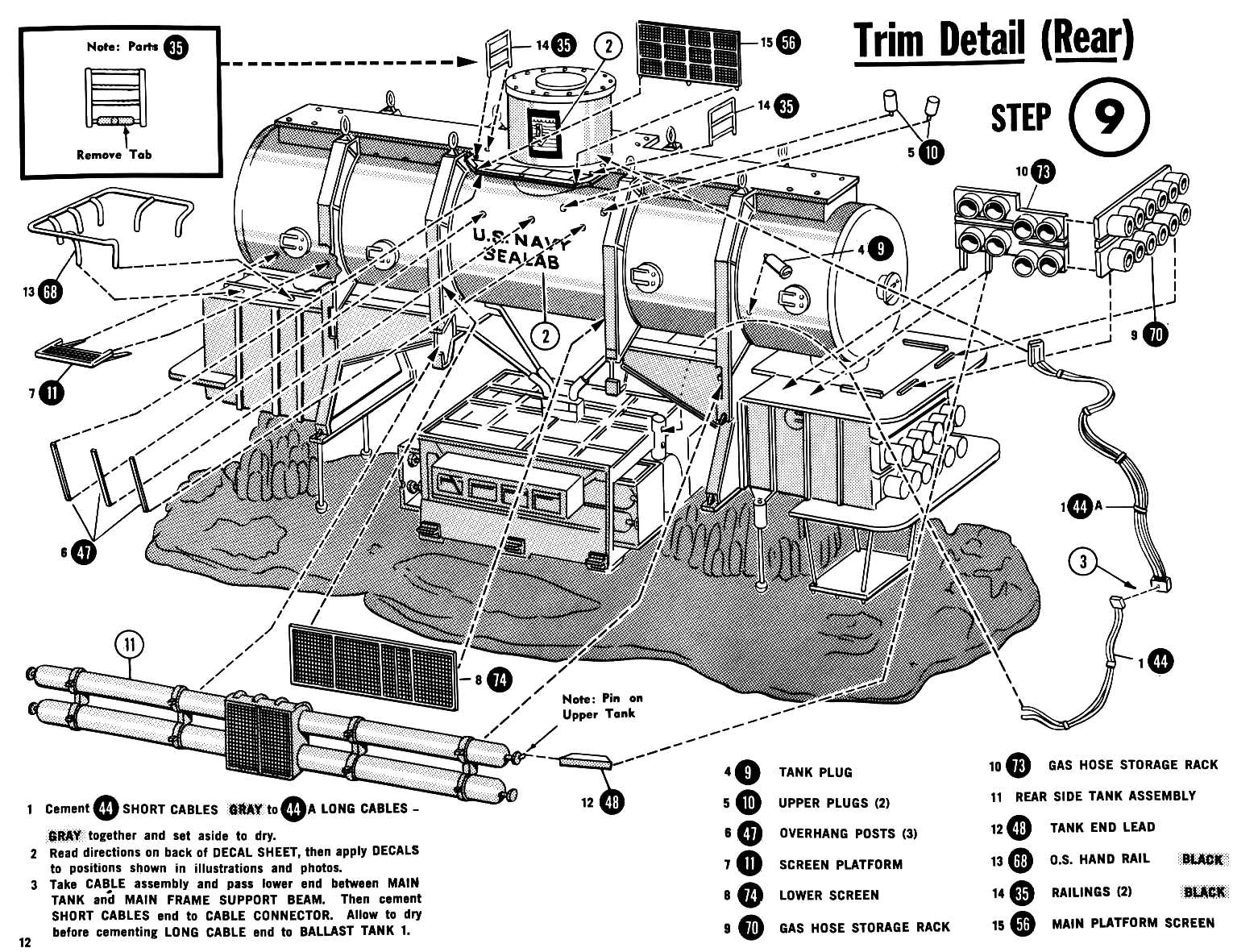
SUBMARINE
INDEX
Alvin
- DSV submersible
Deepsea
Challenger - James Cameron
HMS
Astute 1st of Class
BAE Systems
HMS
Vanguard- Trident
INS
Sindhurakshak - explosion
& sinking
Lusitania
- Torpedo
attack
Predator
- Covert submarine hunter/killer
Seawolf
- Autonomous wolf pack deployment of Predator mini-subs
Trieste
- Bathyscaphe US Navy, Jacques Piccard & Don Walsh
U20
- Kapitan Leutnant Walther Schwieger
USS
Bluefish WWI submarine
USS
Bluefish - Nuclear submarine
USS
Flying Fish
USS
Nautilus - 1st nuclear submarine & subsea north pole passage
LINKS
http://www.sandiegoreader.com/news/2015/oct/12/waterfront-50th-anniversary-sealab-ii/#
https://en.wikipedia.org/wiki/SEALAB
https://en.wikipedia.org/wiki/Sealab_2021
|







